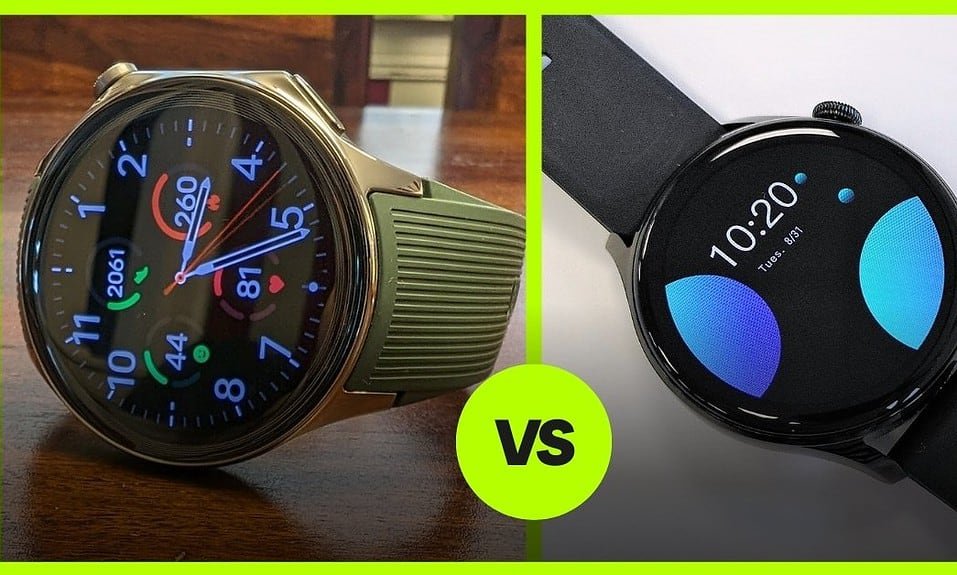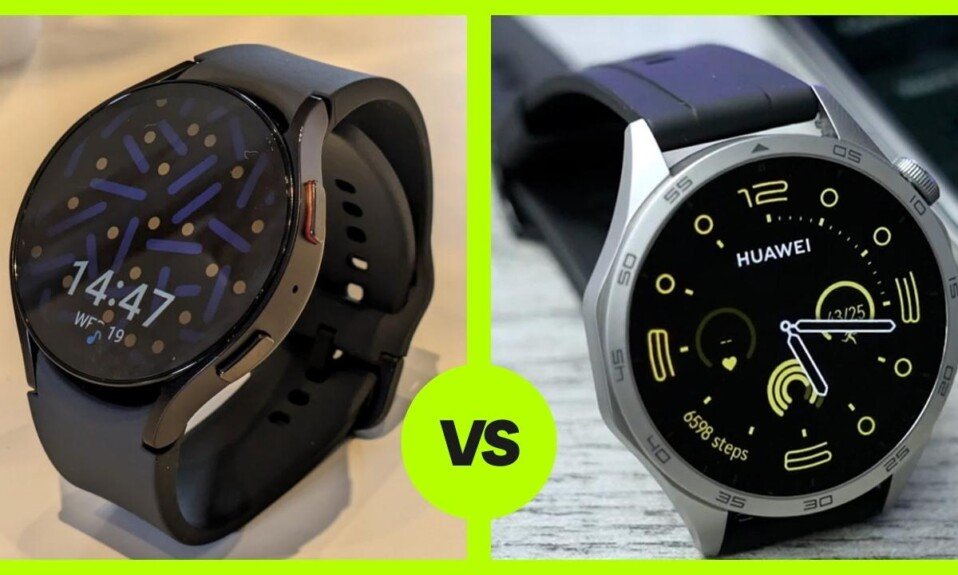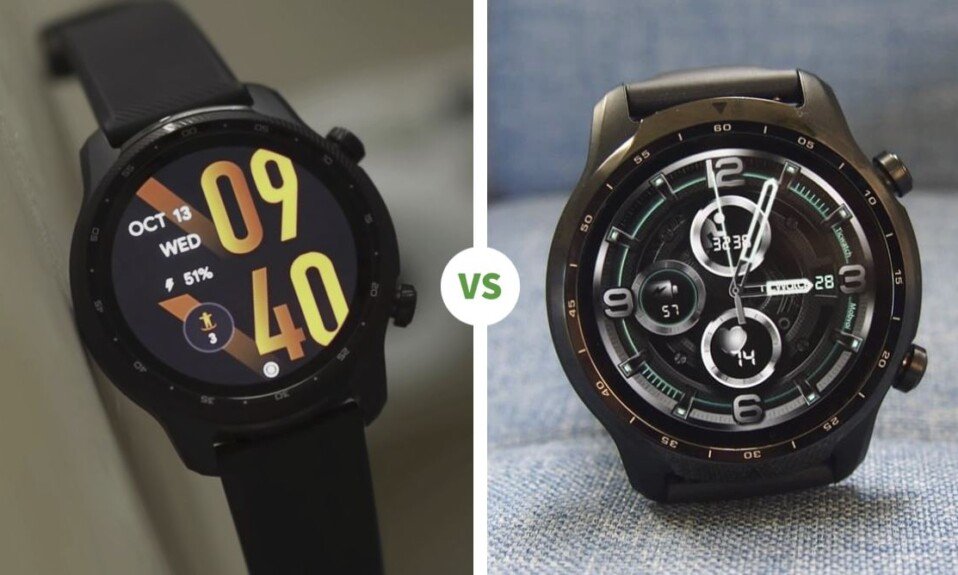Fitbit Charge 6 vs Fitbit Charge 5: The Fitbit Charge 6 and Charge 5 are both fitness trackers with similar designs and features.
Table of Contents
Pros and Cons
| Fitbit Charge 6 | Fitbit Charge 5 |
|---|---|
| Most powerful Fitbit tracker | Current price at $150 |
| New physical side button | Sleeker and lighter design |
| Google’s ecosystem available | Long-lasting battery life |
| Accurate heart rate sensor | Excellent tracking accuracy |
| Looks almost identical to Charge 5 | Lacks physical buttons |
| No major improvements | Less accurate heart-rate sensor |
Fitbit, a well-known name in the world of fitness trackers, gained significant attention with the launch of the Charge 5 back in August 2021. Now, with the launch of the Charge 6, it seems the company’s focus has shifted more towards refining the product and integrating with Google’s ecosystem. But the question many consumers are asking is – should they upgrade? Let’s compare these two models to find out.
Specifications
| Fitbit Charge 6 | Fitbit Charge 5 | |
|---|---|---|
| Brand | Fitbit | Fitbit |
| Released | 28 Sep 2023 | 28 Sep 2021 |
| Price | $160 | $150 |
| Display | 1.04-inch AMOLED | 1.04-inch AMOLED |
| Dimensions and weight | 36.7 x 23.1 x 11.2mm | 36.7 x 22.7 x 11.2mm |
| weight | 37.64g | 28g |
| Materials | Aluminum, glass, and resin | Aluminum, glass, and resin |
| Battery | Upto 7 days | Upto 7 days |
| Charging | 2h charge time | 2h charge time |
| Sensors | Heart rate, SpO2, EDA, ECG | Heart rate, SpO2, EDA, ECG |
| OS | Android, iOS | Android, iOS |
| Connectivity | Bluetooth 5.0, NFC | Bluetooth 5.0, NFC |
| Mobile payments | Google Wallet | Fitbit Pay |
| Water resistant | Up to 50m | Up to 50m |
| Colors | Obsidian, Porcelain, Coral | Black, Steel Blue, Lunar White |
Underneath the surface, both devices possess a rich array of sensors – including a 3-axis accelerometer, optical heart rate monitor, and an NFC chip. The Charge 6, however, stands out with its advanced heart rate tracking capabilities, thanks to Google’s enhanced algorithms.
Interestingly, the EDA (Electrodermal Activity) sensor, which helps measure stress, offers only on-demand readings in both devices, contrasting the continuous readings provided by the Fitbit Sense 2.
Key Differences
Here are the key differences between the two:
| Buit-in GPS (pace & distance) | ✔ | ✔ |
| ECG app for AFib assesment | ✔ | ✔ |
| Exercise modes | 40+ | 20+ |
| YouTube Music Control on wrist | ✔ | ✘ |
| Google Wallet & Maps | ✔ | ✘ |
| Sleep tracking & score | ✔ | ✔ |
| Heart rate on equipment* | ✔ | ✘ |
| Call, text & app notifications | ✔ | ✔ |
| SpO2,skin temp,HR variability | ✔ | ✔ |
| Fitbit Premium membership | 6 months | 6 months |
- Fitbit Charge 6: It acts more like a smartwatch compared to the Charge 5. You can access Google Maps directly on it.
- It offers improved workout tracking with 40 exercise modes, double the 20 modes in the Charge 5.
- Fitbit Charge 5: It’s a bit simpler, focusing mainly on essential fitness features.
- Both devices are waterproof up to 5 ATM, making them suitable for most aquatic activities.
Design
Fitbit Charge 6: At first glance, it looks a lot like the Charge 5! They share the same case, design, and screen. But the Charge 6 is a tad thicker by 1.2mm, and although it shares the height and width with the Charge 5, it weighs less. However, it’s heavier overall at 37.6 grams, which is 34% more than the Charge 5.
Fitbit Charge 5: It’s lighter, weighing 13g less than the Charge 6.
Features & Functionalities
Both the Charge 5 and Charge 6 are adept at monitoring a range of health metrics. These include the basics, like steps and distance, and more intricate ones like HRV (Heart Rate Variability) and skin temperature.
The Charge 6 does step it up a bit by introducing 20 new workout modes and the unique ability to broadcast heart rate data to third-party fitness gadgets through Bluetooth.
Smart Capabilities
The Charge 6 takes the lead in terms of smart features, thanks to its deeper integration with Google. This includes support for Google Wallet, Google Maps turn-by-turn directions, and control over YouTube Music. It even comes with a bonus month of YouTube Premium.
In comparison, the Charge 5 is a tad limited, offering just Fitbit Pay and basic notifications.
The Charge 6 also marks Fitbit’s foray into accessibility features. With ‘Zoom Plus Magnification,’ users can enlarge text on their device, making it easier to read.
Battery Life
Battery performance is commendable in both models, with a single charge lasting almost a week.
Price:
Fitbit Charge 6: Initially, it cost $169, which is actually cheaper than the Charge 5’s starting price of $179.95. But now, it retails at $160.
Fitbit Charge 5: It currently sells for $150.
10 Major Differences
1: Haptic Button
The design of the Fitbit Charge 6 is nearly identical to the Charge 5. It uses the same display, sensors, and easy-to-change band. The only difference is that the Charge 6 has a button on the left side, while the Charge 5 has no button interaction at all. The button on the Charge 6 is a haptic button, meaning it doesn’t physically move when you press it. Instead, you’ll feel and hear it vibrate to let you know it’s been pressed. It performs 100% as well as a true physical button and makes the Charge 6 easier to use than the Charge 5.
2: Zoom Plus Magnification
The Fitbit Charge 6 introduces an accessibility feature absent in its predecessor zoom plus magnification. With this feature enabled, a triple tap anywhere on the screen triggers a magnification of text and icons. However, it’s a temporary boost, requiring another triple tap or a button press to return to regular viewing. Easily configurable in on-device settings, users can choose between 2x or 3x zoom ratios. Regrettably, the Charge 5 misses out on this magnification marvel.
3: Contactless Payments
Both the Fitbit Charge 6 and Charge 5 support contactless payments through their built-in NFC chips. The key difference lies in the payment platforms – the Charge 5 utilizes Fitbit Pay, while its successor, the Charge 6, opts for Google Wallet. If you’re planning on tapping away, it’s wise to check if your bank aligns with the supported options, as Fitbit Pay and Google Wallet cater to different financial institutions.
4: Navigating with Google Maps
The Fitbit Charge 6 using the newly integrated Google Maps app. A quick setup process in the Fitbit app and initial directions from your paired phone are prerequisites. Once underway, the Charge 6 conveniently displays upcoming turns. Unfortunately, the Charge 5 lacks the Google Maps app, leaving navigation to a less tech-savvy realm.
5: Musical Controls for YouTube
The Fitbit Charge 6 offers a dedicated YouTube Music app, granting control over playback functions from the wrist. This exclusive feature requires a paid YouTube Music Premium subscription. Accessible from both the clock face and during workouts, users can start, stop, and skip songs with a swipe. In contrast, the Charge 5 remains silent in the music department, lacking any musical features.
6: Exercise Modes
The Fitbit Charge 6, offering over 40 exercise modes, including 20 new options not found on the Charge 5. Notably, all exercise modes are accessible directly from the wrist, albeit in an alphabetical list format. Meanwhile, the Charge 5 supports six customizable exercise modes on the wrist, with adjustments requiring a smartphone.
7: Heart Rate Broadcasting
The Fitbit Charge 6 is the first Fitbit device that can share or broadcast its heart rate values to other compatible Bluetooth devices, such as gym equipment. This feature allows you to connect your Charge 6 to compatible apps or devices and display your heart rate in real time. The Fitbit Charge 5 does not have this heart rate broadcasting feature.
8: Heart Rate Broadcasting
In order to compare heart rate accuracy, a test was conducted where the Charge 6 and Charge 5 were worn on separate wrists, along with a Polar H10 chest strap, which is considered to be the most accurate way to measure heart rate during workouts. The results showed that the Charge 6 had improved heart rate accuracy compared to the Charge 5, especially during higher intensity workouts.
9: Clock Face Faces
Retaining all clock faces from the Charge 5, the Fitbit Charge 6 introduces four additional faces, with one exclusive to Fitbit Premium subscribers. Among the newcomers, the “Big and Bold” face caters to those desiring larger on-screen statistics.
10: Fitbit App Login Account
The Fitbit Charge 6 is the first Fitbit device that requires you to log in to the Fitbit app with a Google account. If you already have a Fitbit account, you’ll be asked during the setup process if you want to transfer your historical data to your new Google account login. The Fitbit Charge 5 can be set up with either an existing Fitbit account or a Google account.
Conclusion
If you already own a Fitbit Charge 5? If yes, think twice before upgrading. The Charge 5 tracks your fitness pretty well. The main reason you’d want to move to the newer version is for the improved health features. But if your current tracker works fine, you might not need the new one right now.
Between the two, the Charge 6 stands out. Even though it looks similar to the Charge 5, it offers more accurate heart rate tracking and more exercise modes. For $160, it’s worth it, especially if you want a tracker that lasts a long time without needing a recharge.
However, the Charge 5 remains a great choice. It’s perfect for most users, and its price might even drop now that the Charge 6 is available.




